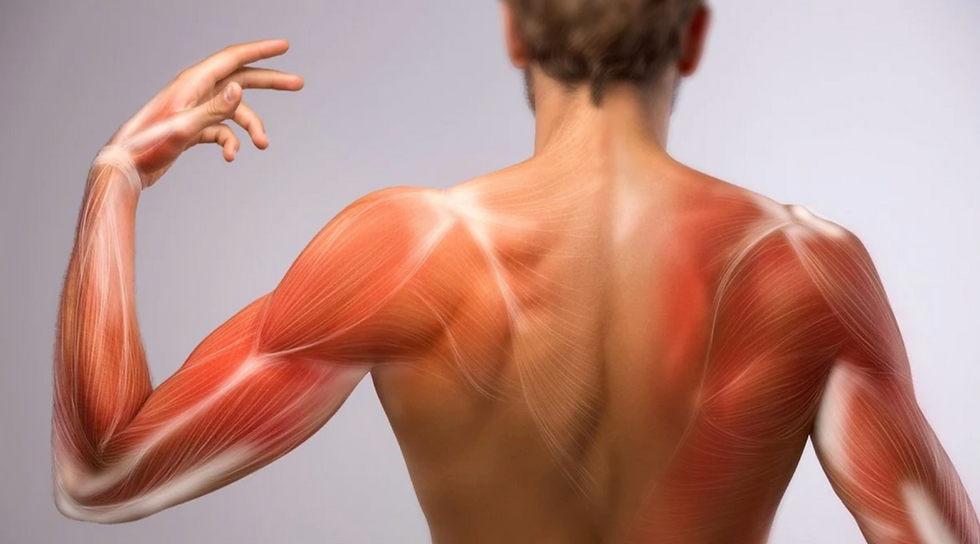Delayed Onset Muscle Soreness (DOMS)
- Louis Liu
- 5 days ago
- 2 min read
Have you ever felt a sense of pain or stiffness in your muscles a day after working out? If you have, congratulations. This phenomenon is known as delayed onset muscle soreness (DOMS). This article will dive explain DOMS in detail and hopefully provide you with some further insights.

What causes DOMS?
High-intensity exercises cause microscopic tears in our muscle fibers, prompting the body to respond to this damage by increasing inflammation, which is one cause of DOMS. Additionally, scientists have identified eccentric movement during exercise as another major trigger of DOMS. Eccentric movement occurs when your muscles produce force while lengthening, such as during the lowering phase of a bicep curl (Olson, 2019). Therefore, the inflammation resulting from intense or unaccustomed exercise and the eccentric movement during workouts are the two primary causes of DOMS.
Is DOMS a sign of a “good workout”?
Many people believe that muscle soreness after a workout indicates the effectiveness of the session—if their muscles are sore, then the session was effective; if not, then no gains were made. However, this is not the case. DOMS often occurs when individuals resume training after a long period of inactivity or when the intensity of the workout is unusually high. As people train more regularly and acclimate to the intensity of their workouts, the soreness experienced afterward will become less significant, but this does not mean that the workouts are ineffective.
What are some methods to reduce DOMS?
Rest. If your muscles are sore after working out, this is your body giving you a sign, telling you that you should take a break, and you should listen to your body. However, you can try to do some light exercise to keep your muscles active, such as walking, yoga or biking. This may also help alleviate the DOMS.
Stretch. Making stretching a habit will definitely help with DOMS. It doesn't have to be right after your workouts; it can be any time in your day. Around 10 minutes of active stretching a day is more than enough.
Ice bath. Ice baths have become a popular recovery strategy around the world in recent years, and there is a reason behind that. It facilitates the blood flow in your body, which enhances recovery. If it is doable, alternating between an ice bath and warm bath can make the recovery even more effective.
Anti-inflammatory diet. Dietary supplements with anti-inflammatory and antioxidant properties, such as omega 3-fatty acids, cinnamon and blueberries, have the potential to prevent and reduce DOMS (Tanabe, Fujii and Suzuki, 2021).
Works Cited
Olson, G. (2019). What Is Delayed Onset Muscle Soreness (DOMS) and What Can You Do About It? [online] Healthline. Available at: https://www.healthline.com/health/doms#symptoms [Accessed 9 Jul. 2025].
Shabir Aminzada (2019). Delayed Onset Muscle Soreness. [online] Zarifa USA. Available at: https://www.zarifausa.com/blogs/massage-therapy/why-do-my-forearms-hurt?srsltid=AfmBOoqEqIfngJyTTHvO5dX2_NFRHyz_LKHBnSw9DcVIR6aaZM97ilkw [Accessed 9 Jul. 2025].
Tanabe, Y., Fujii, N. and Suzuki, K. (2021). Dietary Supplementation for Attenuating Exercise-Induced Muscle Damage and Delayed-Onset Muscle Soreness in Humans. Nutrients, [online] 14(1), pp.70–70. doi:https://doi.org/10.3390/nu14010070.
.png)





Comments